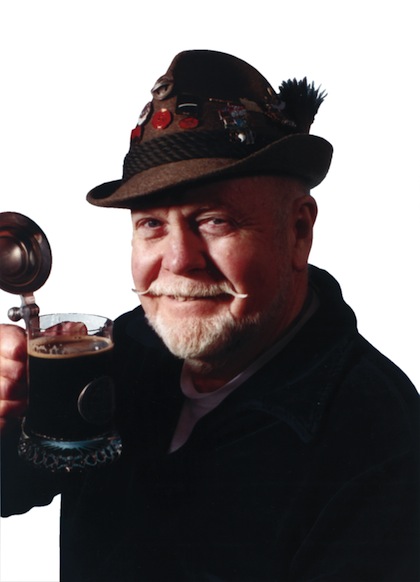Sake is a beer. Yes, that’s right, a beer, because it is made from grain: rice and water are the sole ingredients, unless one counts the fungus (Aspergillus oryzae) that changes the nature of the starches in rice from unfermentable to fermentable. This fungal action takes the place of sprouting the grain’s seeds, as is done to convert barley’s grain starch to sugar for regular beer production. And, of course, there’s also another fungus in sake production: yeast (Saccharomyces cerevisiae var sake).
Japan’s Kyodo News Service in Tokyo reported last year that sake exports will continue their expansion for the 13th straight year. Nearly a third of Japan’s sake exports are aimed at the U.S. market, with the arrival of over 3 million gallons last year, at a cost of $34.8M, an 18 percent increase over 2007.
In the absence of a bar specializing in good sake, search for a Japanese ethnic restaurant offering a selection of at least ten bottled sakes visible behind the bar. Just sample a few (chilled is best) and see what appeals to you.
Across America, sake inventories have been expanding. It appears that our home-grown Japanese-Americans are avoiding sake while the rest of us are drinking more and more of it. It seems that Americans are actually buying the expensive premium brands rather than the cheap stuff. Moreover, we may end up drinking more of the beverage than they do in Japan, where the younger generation is eschewing their rich legacy of traditional sake.

Here in the United States, sake selection has been growing rapidly, with the arrival of many new (and expensive) brands. While it’s true that they are showing up mostly in traditional Japanese-related outlets, they are also appearing in non-Japanese venues: New York City, Chicago, Boston and Minneapolis. Nonetheless, U.S. West coast cities of Seattle, Portland, San Francisco, Oakland, Los Angeles and San Diego probably top the list.
I’m guessing here, but I think there are now close to 500 brands from mostly small and relatively rare kura (breweries) now found in major markets across the country. Small sake-bistros (the Japanese call them izakaya―sit-down bars), each offering upwards of 20 different brands, are now appearing in major market areas. In the major metropolitan areas around San Francisco Bay, for example, there may well be over 30 such bistros. These small establishments also present some fascinating side dishes, beyond just sushi, to accompany their sake offerings, in the fashion of Spanish tapas bars.
True, the expansion has mostly flowered in traditional Japanese stores, but it is also spreading to non-traditional outlets such as the Safeway chain, and even to local organic markets. In San Francisco, don’t miss Beau Timkin’s True Sake shop, maybe our nation’s sole “sake-only” retailer, offering over 150 different sakes for sale.
Sampling Sake
In the absence of a bar specializing in good sake, the reader should search for a Japanese ethnic restaurant offering a selection of at least ten bottled sakes visible behind the bar. Just sample a few (chilled is best) and see what appeals to you. But be careful. Sake may be a beer, but it’s not light: the alcohol level is usually in the 15-16 percent ABV range, somewhat higher than that of wine. A small one or two-ounce sample should be relatively inexpensive and enough to evaluate. If a particular brand seems appealing, then go to a retail outlet with a good sake selection and buy a bottle. Please note that in addition to being expensive, Japanese-produced sakes are usually sold in 720ml bottles, not the 750ml wine bottles we might expect, although they do look alike. This is not an example of wily Asians attempting to cheat the stupid foreigner but rather a manifestation of ancient Japanese volumetric measures (i.e. four gō).
Don’t expect much from the five American sake breweries; because, aside from Oregon’s SakeOne (www.sakeone.com), they are totally clueless in this business. Sadly, all of them, including SakeOne, still supply Japanese-American restaurateurs with those dreadful sake machines that heat sake to coffee/tea temperatures (160F/71C or more). Unfortunately, Americans have come to expect hot sake in Japanese-American restaurants, thus ruining the taste and killing all interest in home consumption of high quality sake by their clientele.



